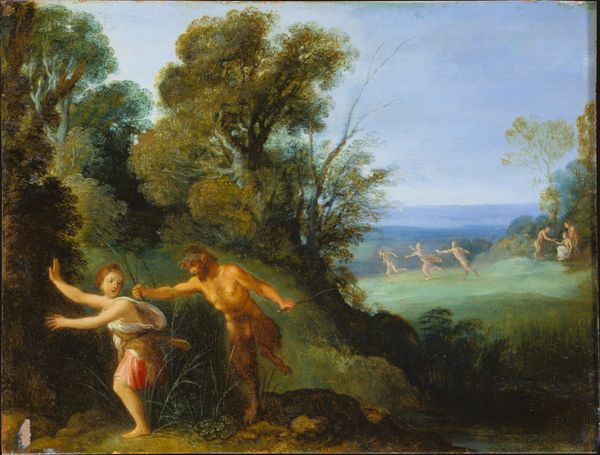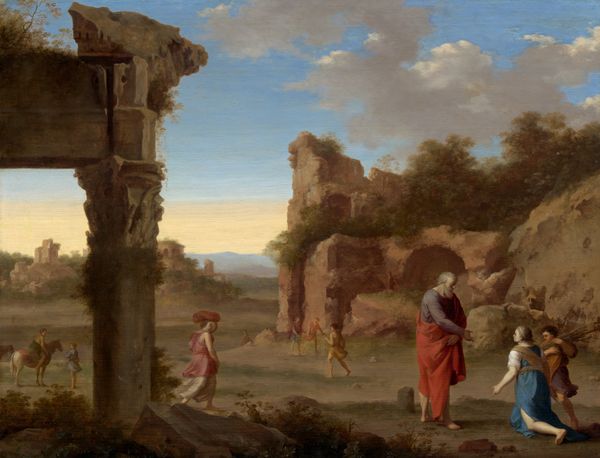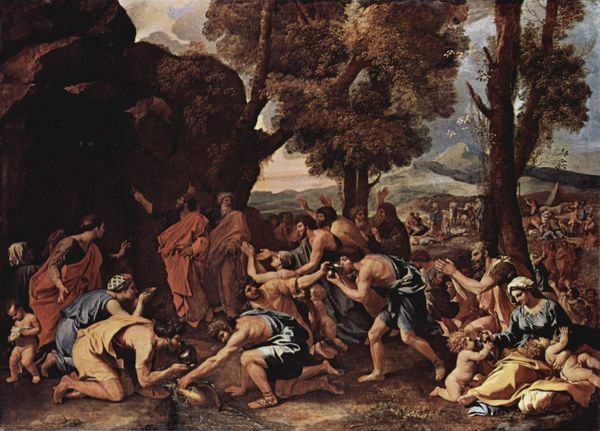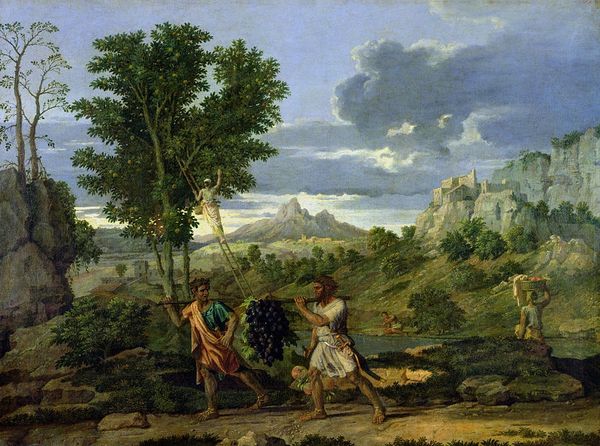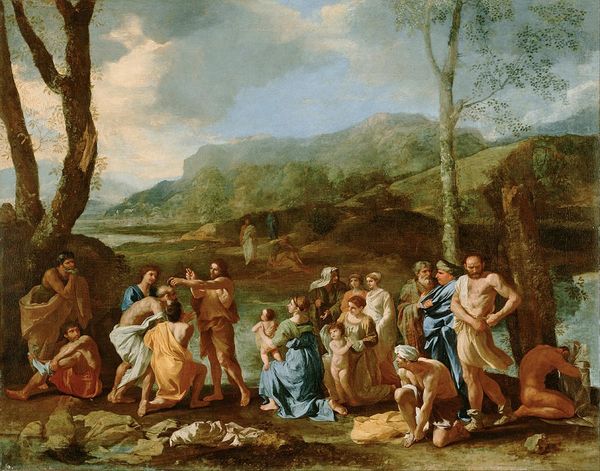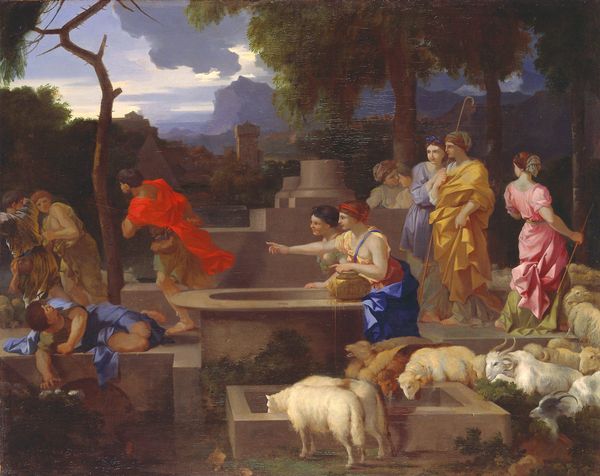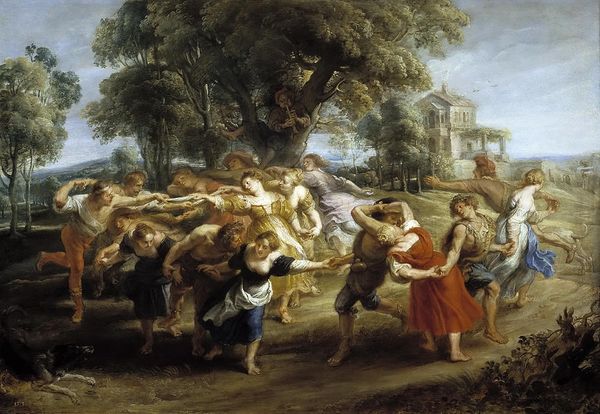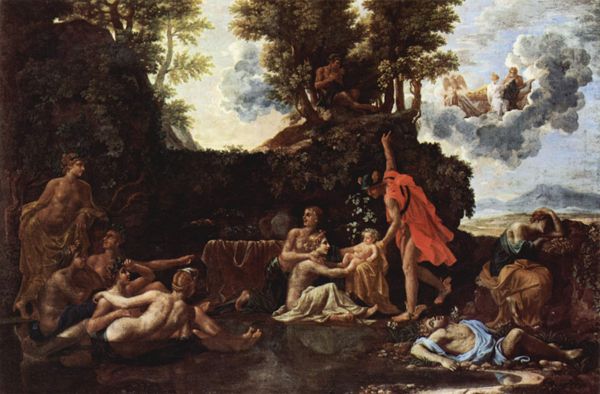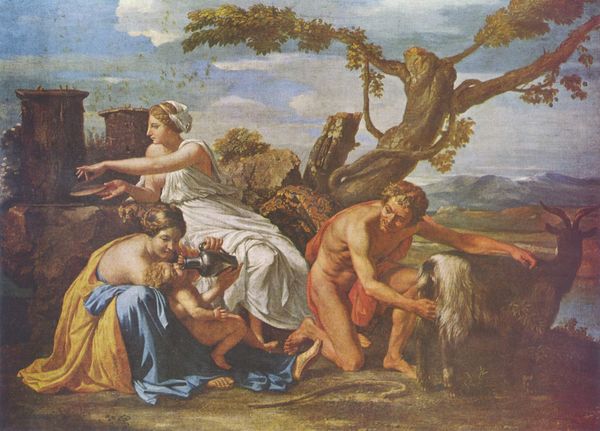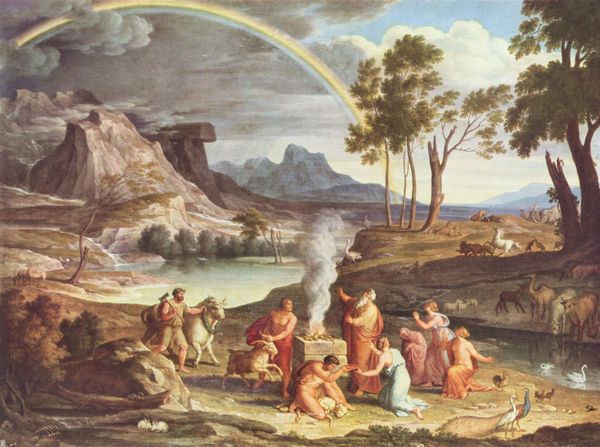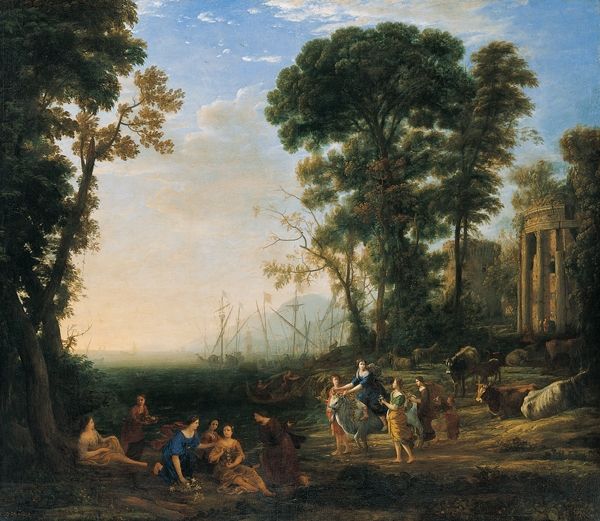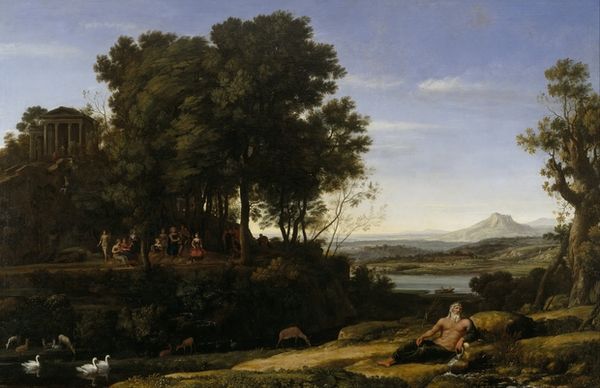
painting, oil-paint
#
allegories
#
allegory
#
baroque
#
painting
#
oil-paint
#
landscape
#
classical-realism
#
oil painting
#
mythology
#
history-painting
Dimensions: 35 x 28 cm
Copyright: Public domain
Curator: Looking at this landscape, bathed in idyllic light, what’s your immediate impression? Editor: There's something almost unnerving in its perfection. The composition feels staged, artificial… Like a carefully curated performance of pastoral life, disconnected from reality. Curator: It is a staged allegory. This is "The Dance of the Seasons" from the hand of Claude Lorrain. His landscapes, often populated with figures from mythology, aimed to elevate the genre of landscape painting. It presents the history painting where ideas, humanistic values, virtues, and philosophical questions could be depicted through figures and symbols that the audience understood well. Editor: Exactly! Who benefits from this idealized vision? It’s easy to romanticize rural life when you are detached from it. Note how even the ruins in the background look picturesque and tidy. Where is labor? Where is suffering? This feels like a ruling-class fantasy imposed upon the canvas. Curator: Though one cannot discard the artist’s purpose, this vision has served patrons over centuries with a depiction of order and progress that can resonate through diverse cultures and ideologies. What strikes you about the specific figures depicted? The artist made many careful selections for this precise moment and composition. Editor: Well, the figures clearly reference classical mythology. A group of figures who personify the seasons appears to dance in a circle, with another man playing a harp. There is even one male figure about to shoot a bow with an arrow. But their actions feel more like posing than truly interacting with the landscape. They lack individual agency, they are subordinate to the overarching symbolic order. Their bodies look somewhat identical too. Curator: Notice that the artist has chosen his colors to make those figures even more distinct within the scene. Note the artist's attention to atmospheric perspective. Light creates distance, separating our earthly realm from the more ephemeral hills and clouds. Perhaps he is telling us that seasons go on beyond our mortal realm and have had resonance well beyond our time, reaching all the way back into history. Editor: Perhaps. But what happens if we reject the prescribed interpretation? What if, instead of accepting this harmony, we recognize the power structures embedded within this artificial paradise? To only view this for its virtues and good values is to silence the voices of the dispossessed that this work ultimately seeks to obscure. Curator: Well, by looking closer, we have made the painting become more complex and interesting, full of hidden nooks to interpret. It may carry within it an eternal dance, one that includes many meanings, and many audiences. Editor: It makes us rethink not just art, but our current relationship with idealized social order and our ecological systems.
Comments
No comments
Be the first to comment and join the conversation on the ultimate creative platform.
